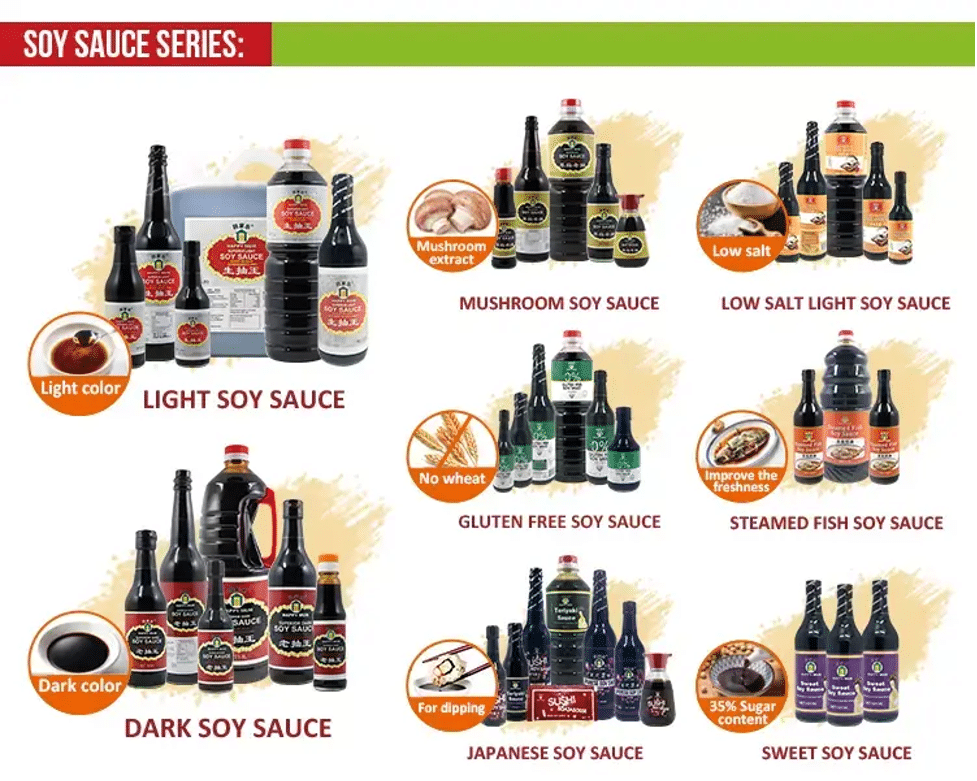Have you ever wondered what soy sauce Japanese restaurants use?
Soy sauce is a condiment used for seasoning and cooking a variety of dishes across Asia. But the sauce is especially a crowned ingredient in Japanese cuisine.
Soy sauce is deeply rooted in Japan’s culinary tradition. It is cherished for its rich, tangy, sweet, salty, and umami flavor. Sushi, ramen, tempura, and teriyaki are all prepared and served with a little soy sauce on the side. But what soy sauce do Japanese restaurants use?
We have the answer to this intriguing question.
What Soy Sauce Do Japanese Restaurants Use?
Soy sauce serves as a condiment widely used in East and Southeast Asia. It is prepared from fermented soybeans and wheat by adding salt, water, and a fermenting agent. It is also called shoyu and soya sauce.
Soy sauce was originally produced in China, and its primary purpose was to prevent food spoilage and enhance the flavor of Chinese dishes. Over time, the sauce spread widely and became a key ingredient in various Asian cuisines, including Japan.
So, what soy sauce do Japanese restaurants use? Japanese restaurants have a variety of soy sauces in their pantry. Each Japanese soy sauce has its own unique flavor profile and distinct taste. Here are some of the most commonly used soy sauces in Japan:
1. Koikuchi (Dark) Soy Sauce
Koikuchi soy sauce is widely used in restaurants across Japan. It accounts for about 80% of the country’s soy sauce production. The deep, rich flavors of the sauce make it a reliable option for cooking various recipes with perfection. It has a sweet, salty flavor profile that is rounded by its refreshing umami notes. The unique blend of taste and flavor makes this sauce a staple in Japanese kitchens.
2. Usukuchi (Light-Colored) Soy Sauce
Usukuchi soy sauce is a light-colored Japanese soy sauce that may be the second most popular in the country. The sauce is said to originate from the Kansai region of Japan and gradually became a famous ingredient in a variety of Japanese dishes.
Compared to Koikuchi, Usukuchi has a higher salt concentration, which gives it a saltier flavor. Chefs use it in recipes where they want to maintain the light color of the dish, such as soups, stews, and broths.
3. Shiro (White) Soy Sauce
Boosting a pale amber color, Shiro soy sauce was first made in the Hekinan City of Aichi Prefecture. This light-colored Japanese soy sauce has a mild, sweet, but salty flavor followed by a unique fragrance. The light tone is due to the higher amount of wheat used during fermentation. It is commonly used in soups and chawanmushi (steamed egg custard).
4. Tamari Soy Sauce
Tamari soy sauce has a dark and thick texture and is mainly brewed in the Chubu region of the country. It is often called “sashimi tamari” in Japan because it is commonly used as a dipping sauce for sushi and sashimi.
Tamari is a byproduct of miso, which is a mixture of soybeans, rice, salt, and koji. The long fermentation process gives this sauce a dense, umami flavor. This makes it ideal for dishes that require a deep, savory taste.
So, now you know the answer to the question: What soy sauce do Japanese restaurants use?
Chinese vs. Japanese Soy Sauce: A Comprehensive Analysis
Soy sauces are a staple ingredient in both Chinese and Japanese cuisine. But then, what’s the difference between Chinese and Japanese soy sauces? Here is a Chinese vs. Japanese soy sauce comparison to understand the difference.
- Typically, Chinese soy sauce tends to be more concentrated and salty, as Chinese cuisine often involves stir-frying, braising, and boiling, which requires a stronger flavor profile. In contrast, Japanese soy sauce is generally sweeter and milder, reflecting the preference for cold dishes in Japan that emphasize the natural flavors of the ingredients.
- Specifically, in Chinese cuisine, you will find light and dark soy sauce. The light sauce is widely used for seasoning and marinating, and the dark soy sauce enhances the flavor of certain dishes, such as braised meat, stew, and stir-fries. Japanese soy sauce is also quite versatile. It is used as seasoning in sushi, sashimi, and ramen.
- One more thing to mention is that Chinese soy sauce tends to use wheat flour instead of roasted wheat like Japanese soy sauce does.
Soy Sauce Manufacturer Recommendation
Authentic seasoning is critical in ensuring the flavor profile of the dish. Therefore, knowing the difference between different sauces is important. If you are looking for healthy and delicious soy sauces for your restaurant, you may check out the soy sauce collection of JOLION Foods!

JOLION Foods is a leading provider of a wide variety of oriental soy sauces. The company has state-of-the-art equipment to provide the highest quality products to its customers. Meeting strict food regulations with many international certifications, JOLION Foods’s diverse range of soy sauce includes light, dark, gluten-free, and low-sodium, each tailored to suit different culinary needs and diverse recipes.
Additionally, its wide product catalog covers more, which includes oyster sauce, vinegar, chili sauce, and some other condiments.
Conclusion
Now, you have a rather comprehensive understanding of the question: What soy sauce do Japanese restaurants use? Contact JOLION Foods if you need some healthy and delicious kinds. This brand offers diverse ODM & OEM services. In addition to traditional condiments, like soy sauce, sesame oil, and peanut butter, it also has new introductions, such as canned vegetables and fruits and seaweed sheets.
